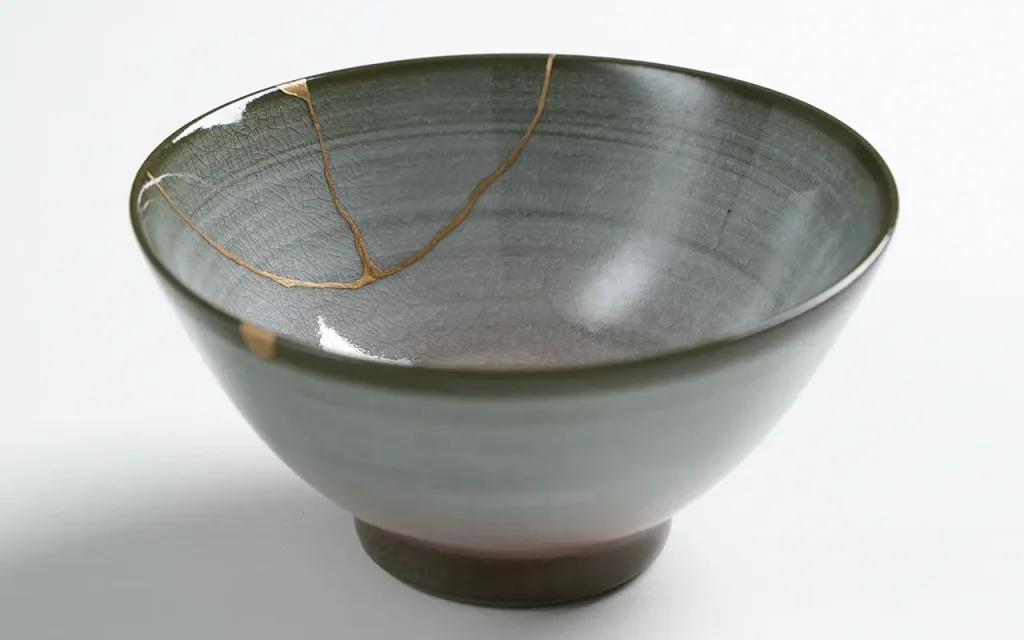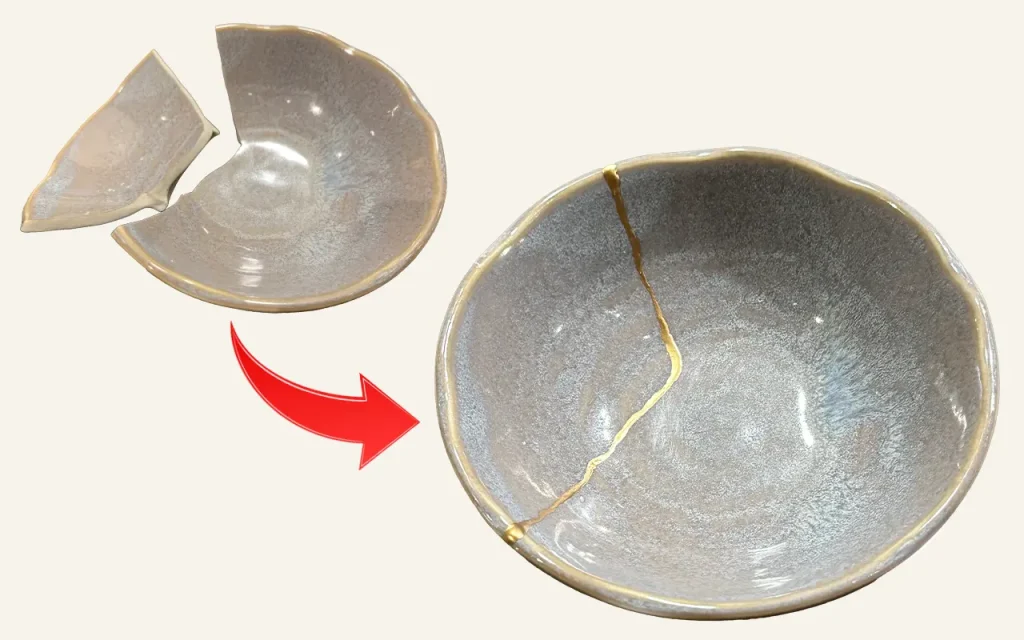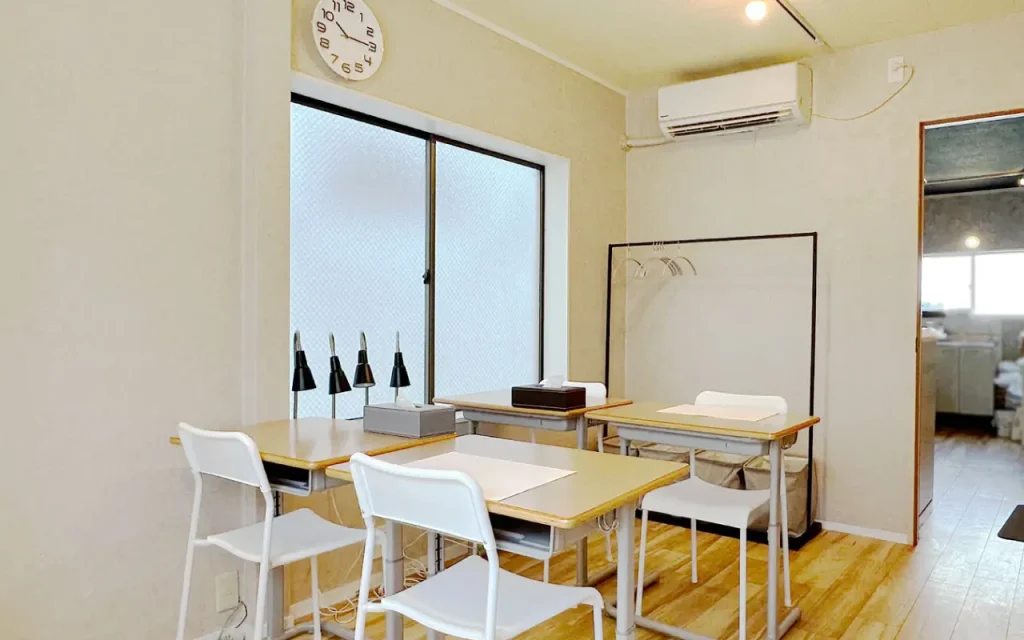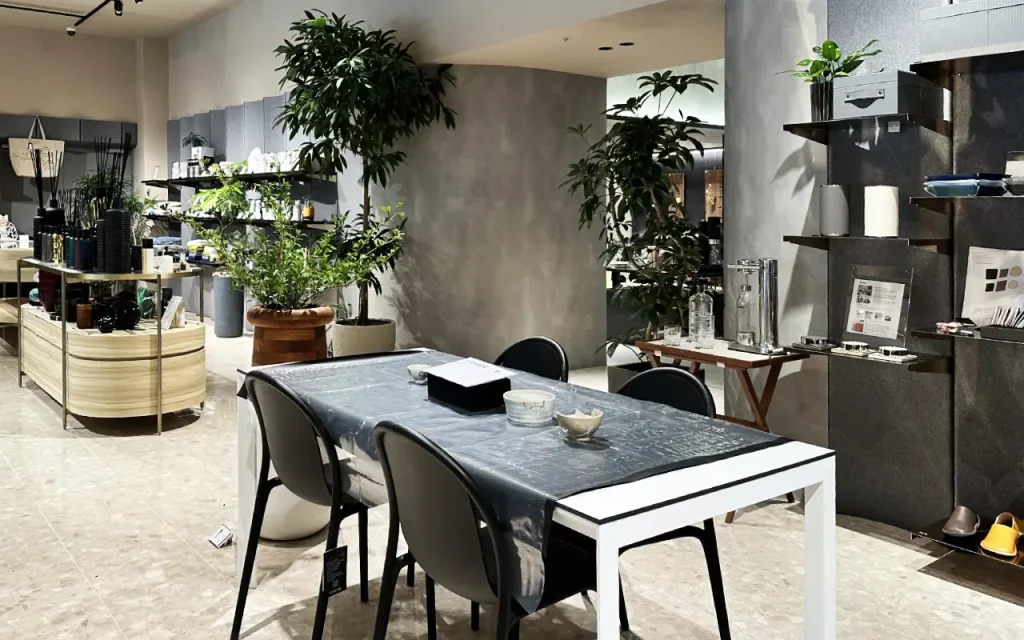Kintsugi Workshop

If you have a broken pottery or ceramic that you just can’t get rid of or want to keep,
repair it and keep using.
Add Kintsugi into your daily life.
WHO WE ARE
Welcome to Kintsugi Kurashi website. We are based in Tokyo and surrounding cities propagating Kintsugi art and techniques.
Our activities vary from teaching to repair services. We provide Kintsugi lessons and workshops at our schools and at remote sites for our clients.
We take repair services for broken ceramics, porcelain, and glass using Kintsugi techniques and we have repaired over 1,000 items since we started our business.
We also provide lectures on Kintsugi, work with media, and support fellow artisans.
Our motto is “cherish vessels with fond memories”. The name, Kintsugi Kurashi, comes from our philosophy to bring Kintsugi into the daily life, or “Kurashi” in Japanese.
Join us at our workshop if you are interested in learning Kintsugi. We take pride in teaching it with instructions easy to understand and making sure that everyone enjoys the process.
What is Kintsugi?

Kintsugi (Golden joinery), also known as Kintsukuroi (Golden repair), is a traditional Japanese art and technique of fixing broken objects such as ceramic potteries and glass by adhering the broken pieces together.
Traditional Kintsugi
This method uses Hon-Urushi (pure natural lacquer sap) to repair broken vessels.
Since Hon-Urushi takes a long time to harden, the repair cannot be completed in a single day.
Furthermore, it may cause contact dermatitis, so careful handling is required.
Nevertheless, the unique finish of Hon-Urushi and the use of traditional tools are what make this technique so attractive.
Process of Traditional Kintsugi
- Bonding the broken pieces (approx. 2 hours)
– Curing time of Hon-Urushi (7+ days) – - Filling the chipped areas (approx. 2 hours)
– Curing time of Hon-Urushi (3+ days) – - Polishing the filled areas & applying lacquer (approx. 2 hours)
– Curing time of Hon-Urushi (3+ days) – - Polishing the lacquered surface & reapplying lacquer (approx. 2 hours)
– Curing time of Hon-Urushi (3+ days) – - Repeat step ④ (approx. 2 hours)
– Curing time of Hon-Urushi (3+ days) – - Repeat step ④ again (approx. 2 hours)
– Curing time of Hon-Urushi (3+ days) – - Repeat step ④ once more (approx. 2 hours)
– Curing time of Hon-Urushi (3+ days) – - Polishing the lacquer surface & decorative finishing (approx. 2 hours)
– Curing time of Hon-Urushi (7+ days) –
At this stage, you can take the vessel home, but it can only be used 7 days after the decorative finishing.
Modern Kintsugi
In this method, Hon-Urushi is not used. Instead, adhesives and resins are used to repair the vessel.
Because fast-drying materials are used, the repair can be completed in a single day.
Although the materials differ, the charm of modern Kintsugi is that you can still experience the Japanese spirit of “mending and cherishing” while learning the technique.
However, please note that under Japanese law, only materials that comply with the Positive List under the Specifications and Standards for Foods, Food Additives, Etc. (Public Notice No.370 of the Ministry of Health and Welfare, Japan) may be safely used for tableware. Therefore, careful selection of materials is essential.
Process of Modern Kintsugi
- Bonding the broken pieces (approx. 10 minutes)
– Curing time of adhesive (5 minutes) – - Filling the chipped areas (approx. 15 minutes)
– Curing time of filler (10 minutes) – - Polishing the filled areas (approx. 10 minutes)
- Decorative finishing of the surface (approx. 15 minutes)
– Curing time of surface coating (15+ days) –
At this stage, you can take the vessel home, but it can only be used 15 days after the decorative finishing.
Why You Should Choose Kintsugi Kurashi
1. Kintsugi Instruction Tailored to Your Needs.
As explained above, there are now a variety of Kintsugi methods.
At Kintsugi Kurashi, you can learn both traditional Kintsugi and modern Kintsugi.
We also offer customization according to your preferences, such as adjusting the lesson content or providing private lessons.
2. Use of Safe Materials Approved by Japanese Law.
The materials used in our modern Kintsugi techniques comply with the Positive List under the Specifications and Standards for Foods, Food Additives, Etc. (Public Notice No.370 of the Ministry of Health and Welfare, Japan).
Since these materials are certified as safe for use with tableware, you can enjoy the Kintsugi experience with peace of mind.
3. Experienced instructors
Our instructors all have experienced instructing in TV drama series, hosting large corporate workshops, and receiving interviews by the domestic and international media.
They have also supervised publications on Kintsugi accessories (see link in Japanese: 本の監修).
Number of our participants are first-time beginners, and they are all educated well through those trusted instructors.
4. Accessible locations
Our locations are close to stations such as Jiyugaoka, Roppongi (all around 5-7 minutes on foot).
It is also possible to provide lessons at hotels, offices, and other locations upon request.
Available Courses
At Kintsugi Kurashi, we offer workshops where you can learn Kintsugi in English.
You can choose whichever is suitable for your interests.
1. Traditional Kintsugi workshop
This course uses natural Urushi lacquer to repair pottery.
As explained above, the process cannot be completed in a single day, and you will need to attend at least eight sessions.
However, it is possible to reduce the number of sessions by customizing the content instead of experiencing every single step.
Please feel free to contact us by email for consultation.
Email: support@kintsugikurashi.com
2. Modern Kintsugi Workshop
This course does not use natural Urushi lacquer, but instead employs adhesives and resin to repair pottery.
Duration: 1.5 – 2 hours
Fee: ¥13,200 (tax included)
Payment Method: Advance payment by credit card
Schools
Jiyugaoka School:

(Hon-Urushi Course is available at Jiyugaoka School only)
| Address: | 2F, 1-14-8 Jiyugaoka, Meguro-ku, Tokyo 152-0035 |
| Map: | https://maps.app.goo.gl/htC96iupAABHkwYMA |
Roppongi Hills School at g KEYAKIZAKA:

| Address: | Roppongi Hills Hillside B1, 6-10-2 Roppongi, Minato-ku, Tokyo 106-0032 |
| Map: | https://maps.app.goo.gl/rGKGHogxc3trvwtN7 |
History of Kintsugi
Kintsugi became closely associated with ceramic bowls and porrey used for Chanoyu, or Japanese tea ceremony, for its philosophy of wabi-sabi and compassionate sensitivity is quite similar to the philosophy of Kintsugi.
It is also said that Kintsugi may originate when Japanese shogun, Yoshimasa Ashikaga sent a damaged Chinese tea bowl back to China for repairs in the late 15th century. When it was returned, repaired with metal staples, it urged Japanese artisans to search for and come up with a more aesthetically pleasing ways of repair.
In the late 16th century, Japanese tea ceremony Master Sen no Rikyū, who codified the way of tea, said to be the one who acknowledged Kintsugi and caused the art to be wide spread. Back then, repaired ceramic bowls and pottary are considered to have special value as they are “brought back to life”.
Frequently Asked Questions
- Could we use the repaired ceramics as tableware?
-
Yes. All the tools and materials we provide at our workshops meet the legal requirements of Food Sanitation Act standards. Reference in Japanese: 『厚生省告示第370号』 You may enjoy using the repaired ceramics for food plating.
- Could I join your workshop alone?
-
Of course. Many of our participants join us individually.
- May I bring two tablewares that I want to repair?
-
Yes. If it seems possible to repair within the two hours, you may bring as many as you want and no additional fee will be charged.
- May I bring two or more tablewares to repair?
-
Yes, you may bring multiple tablewares to repair within the workshop period at no additional charge.
- Could I repair glass?
-
It is possible but it is considerably harder than repairing ceramics or porceline. Please send an email to us and attach images of the glass you want to repair before the day of the workshop.
- I have so many ceramics I want to repair. May I join workshops as many times as I want?
-
You can sign up to our workshops as many times as you wish. We will support you the best we can so you can mend all the items you wish to repair.
- What happens if the ceramic is broken up to pieces and seems impossible to repair within two hours during the workshop?
-
If the item is broken so badly, it is possible that it can’t be fixed within two hours of the workshop. If you are concerned, please send an email to us and attach images of the item you want to repair before the day of the workshop. We will let you know the estimated duration it may take to repair. If you decide to join the workshop, please add the information on the notes section of our RSVP form.
- Are the workshop instructors all professionals?
-
There is no permit or license to Kintsugi practitioners, however, our instructors all have experienced repairing a number of items. They also have instructed in TV programs and received media interviews.
- What can I learn from your Beginner’s Kintsugi workshop?
-
You will learn how to repair ceramics, pottery and glass using lacquer and gold.
- Is the workshop available in English?
-
We have instruction materials available in English. English Translator is available for JPY30,000 per group per session. Chinese translator is available at Roppongi Hills School on Tuesdays.
- How long is the workshop?
-
It is about 2 hours to repair 1-2 pieces.
- How much is the workshop?
-
It is JPY8,000 and can be paid by cash and credit card.
- Do I need to bring a broken piece to repair?
-
You are welcome to bring your own. Depending on the damage and the material, you may not be able to repair it within 2 hours during the workshop. In that case, or if you don’t have a piece of your own to repair, you may choose from a selection of ceramics at an additional cost of JPY300 per item.
- What do I need to bring to the workshop?
-
Please bring; a paper bag or box (avoid soft materials) large enough to take your Kintsugi piece in. Urushi at the end of the workshop is yet to dry completely. We will help to arrange your piece in your bag / box so it will continue to dry after you leave the workshop.
something to drink (stay hydrated!)
glasses or eyewear as needed
